How to Design the Perfect Lighting Scheme

Choosing the right lighting for every room in the house isn’t as simple as you might think. To help make things easier, we’re going to show you how to design the perfect lighting scheme for all the different spaces in your home.
The perfect bathroom lighting scheme
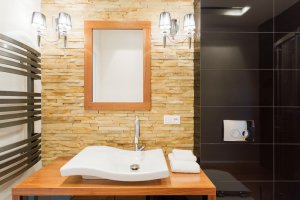
The bathroom is one room where you have to be particularly careful when it comes to placing and installing lights. Put them in the wrong place, and you’ll constantly find yourself in half-darkness. To avoid this, it’s important to install lights in at least two different places. If your bathroom is fairly large, you can put in more if necessary.
The first thing you’ll need to do is install a central ceiling light. A secondary light should then be placed just above the mirror, to counteract any shadows cast by the central light.
Bathroom lights should be white and very powerful, to avoid any shadows. When it comes to plugs and sockets, they should be installed a safe distance away from your bath and shower to help prevent accidents.
Kitchen lights
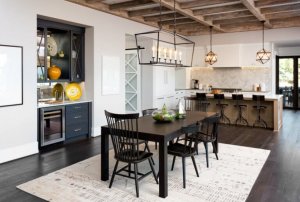
Lights and fittings similar to those found in bathrooms can also be used in kitchens. Because the kitchen is a workspace, you run the risk of encountering the same problem as in bathrooms: shadows. To avoid this, it’s important to include several different light sources.
One of those lights should be placed above the countertop, as that’s where you’ll be doing most of your work, and where shadows can cause the most problems. You’ll need the same kind of lights as in the bathroom – white and powerful. If you have the option of installing individual switches, so much the better. Combine them with small halogen bulbs, and you’ll be able to save both energy and money.
Another way to reduce spending is to use energy-saving light bulbs, as they’re designed to be used for longer periods. Fluorescent lamps are another good option when it comes to lighting kitchens. You can install them on the underside of cupboards and above your countertops.
How to light up your living room
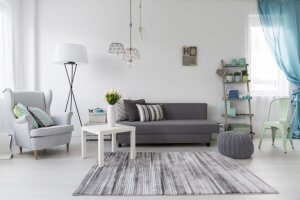
When it comes to lighting your home, living rooms are one of the most difficult places to get right. It all depends on how wide the room is. Although you’ll need a main light, generally speaking, it won’t be enough to light the room properly on its own, so consider additional lights.
You can install these lights on the ceiling, distributing them at strategic points around the room and making sure each has its individual switch. Alternatively, you can include small table lamps. The ceiling lights can help to illuminate the space around the TV, or any tables you might eat or work at. Meanwhile, table lamps can help to illuminate armchairs and couches, so that you have plenty of light to read by.
Bedroom lighting scheme
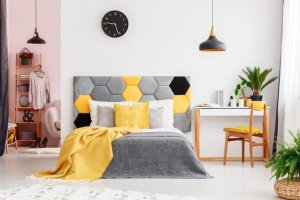
Needless to say, bedrooms are generally reserved for sleeping and resting. In most cases, a single main light should be enough. Be sure to choose warm lighting that promotes relaxation.
Unlike kitchens and bathrooms, bedroom lights should have a muted, yellow tone, rather than the powerful white lights used in other areas of the house. You can also incorporate additional lights, placing them on your bedside tables or chest of drawers.
The importance of hallways
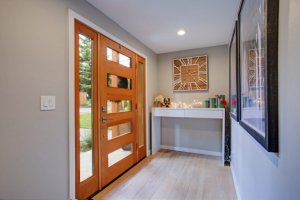
Lastly, we want to look at hallways, corridors and entrance halls. If the corridor is fairly long or turns to the left or right, the best option is to use small halogen lights with individual switches so you can light each section separately. As for the entrance hall, a single light should be enough, as they aren’t generally all that large.
Choosing the right lighting for every room in the house isn’t as simple as you might think. To help make things easier, we’re going to show you how to design the perfect lighting scheme for all the different spaces in your home.
The perfect bathroom lighting scheme

The bathroom is one room where you have to be particularly careful when it comes to placing and installing lights. Put them in the wrong place, and you’ll constantly find yourself in half-darkness. To avoid this, it’s important to install lights in at least two different places. If your bathroom is fairly large, you can put in more if necessary.
The first thing you’ll need to do is install a central ceiling light. A secondary light should then be placed just above the mirror, to counteract any shadows cast by the central light.
Bathroom lights should be white and very powerful, to avoid any shadows. When it comes to plugs and sockets, they should be installed a safe distance away from your bath and shower to help prevent accidents.
Kitchen lights

Lights and fittings similar to those found in bathrooms can also be used in kitchens. Because the kitchen is a workspace, you run the risk of encountering the same problem as in bathrooms: shadows. To avoid this, it’s important to include several different light sources.
One of those lights should be placed above the countertop, as that’s where you’ll be doing most of your work, and where shadows can cause the most problems. You’ll need the same kind of lights as in the bathroom – white and powerful. If you have the option of installing individual switches, so much the better. Combine them with small halogen bulbs, and you’ll be able to save both energy and money.
Another way to reduce spending is to use energy-saving light bulbs, as they’re designed to be used for longer periods. Fluorescent lamps are another good option when it comes to lighting kitchens. You can install them on the underside of cupboards and above your countertops.
How to light up your living room

When it comes to lighting your home, living rooms are one of the most difficult places to get right. It all depends on how wide the room is. Although you’ll need a main light, generally speaking, it won’t be enough to light the room properly on its own, so consider additional lights.
You can install these lights on the ceiling, distributing them at strategic points around the room and making sure each has its individual switch. Alternatively, you can include small table lamps. The ceiling lights can help to illuminate the space around the TV, or any tables you might eat or work at. Meanwhile, table lamps can help to illuminate armchairs and couches, so that you have plenty of light to read by.
Bedroom lighting scheme

Needless to say, bedrooms are generally reserved for sleeping and resting. In most cases, a single main light should be enough. Be sure to choose warm lighting that promotes relaxation.
Unlike kitchens and bathrooms, bedroom lights should have a muted, yellow tone, rather than the powerful white lights used in other areas of the house. You can also incorporate additional lights, placing them on your bedside tables or chest of drawers.
The importance of hallways

Lastly, we want to look at hallways, corridors and entrance halls. If the corridor is fairly long or turns to the left or right, the best option is to use small halogen lights with individual switches so you can light each section separately. As for the entrance hall, a single light should be enough, as they aren’t generally all that large.







